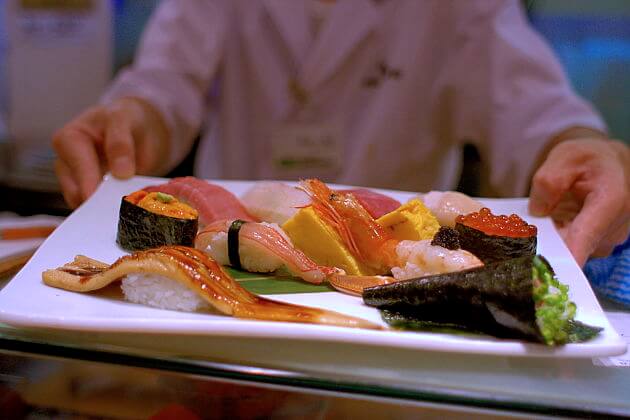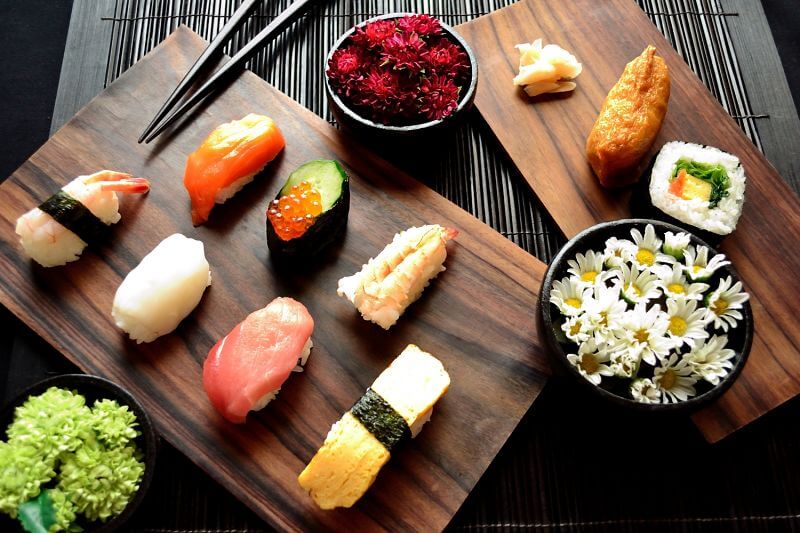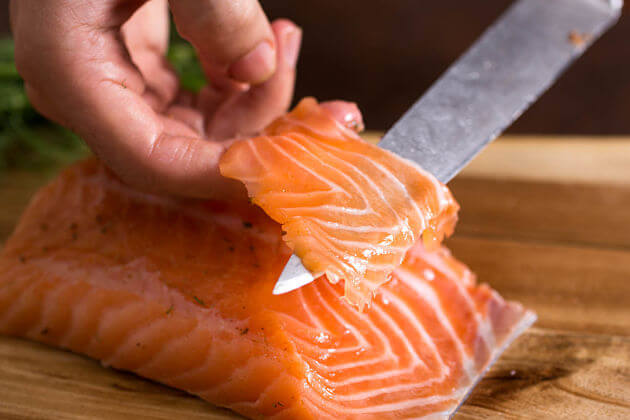No products in the cart.
Japan Travel Guide - Introduction & Information
Introduction about Sushi Japanese Traditional Food
Sushi is famous to be one of the most impressive creations of Japanese cuisine. Sushi is a Japanese dish with rice traditionally wrapped in a piece of nori seaweed. It has conquered the whole world for its mild and neutral flavors as well as appealing visual beauty. Japan Shore Excursions’ team is here to provide sushi-lovers interesting information about this famous and iconic Japanese food. Moreover, we also offer cruise tours heading to Japan port cities where visitors can experience Japanese culture and try on fresh sushi at some of the most famous sushi restaurants there.
History of Sushi - Japanese Traditional Dish
Sushi was known originally as a way of preserving food. Fish was fermented with salt and placed in rice, which allowed people to keep the fish edible for some time. The rice was then discarded while the fish was eaten if needed. Around the seventh century, the method eventually headed to Japan after spreading throughout China. The Japanese made their special remarks by deciding to eat the rice together with the fish. By the 17th century, Matsumoto Yoshiichi of Edo (Tokyo nowadays) started seasoning the rice with rice wine vinegar and this is when modern day sushi began. By his method, sushi can be eaten immediately instead of months of preparing.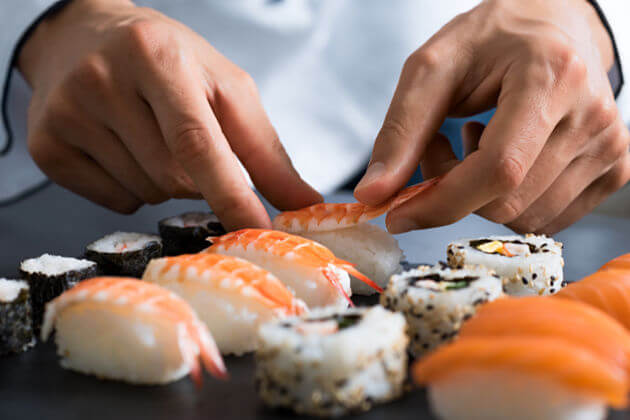
10 Fun Facts about Sushi
- Sushi had its origin from outside of Japan
Although Sushi is fully related to the Japanese culture nowadays, the true inspiration for sushi is said to have started in Southeast Asia. Narezushi, known as fermented fish wrapped in sour rice, is believed to originate from the Mekong River area before making its way to China and later Japan. - Sushi or Zushi?
It is because of the consonant mutation in the Japanese language. When a prefix is attached, the first letter "s" is turned into a "z" as in nigirizushi or makizushi just to name a few. - Female sushi chef are rare
Back in the days, women were excluded from making sushi because their higher body temperature and perfume were believed to be able to ruin the fresh taste and quality of the fish. Their imbalance taste which was greatly important to be a sushi chef was another reason. Nowadays, things are different. There is a small number of female sushi chefs working in sushi restaurants across the country. Especially, Nadeshiko Sushi Restaurants is now running their entire business by women. - Sushi Knife Is Specialized
A traditional sushi knife is supposed to be sharpened on one side while the other side of the blade is flat, which creates a finer edge suitable for cutting the fish.
- The most expensive sushi costs up to $2,000
A five-piece set of nigiri sushi, wrapped in 24-karat gold leaf and garnished with real diamonds, was recorded as the most expensive sushi for its surprising cost of nearly $2,000. This impressive masterpiece was created by Angelito Araneta, Jr. of the Philippines. - Sushi is originally eaten with hands
Sushi is traditionally eaten with hands, not chopsticks. Now, this can be seen more commonly at high-end sushi restaurants rather than at conveyer belt sushi places. - Soy Sauce should not be wasted
Leaving a green, murky puddle of soy sauce after your meal is considered disrespectful, to avoid that, you should just pour a small amount of soy sauce enough for eating and refill it later if necessary. - Makizushi Isn't Always Rolled in Seaweed
Although sushi wrapped in black seaweed is the most popular form, makizushi can also sometimes be wrapped in soy paper, cucumber, or egg in Japan. - Sushi was once a cheap fast food
Unlike today where sushi often appears in fancy restaurants, sushi was originally a cheap, quick snack to eat with the hands while enjoying performances at the theatre. - There is sushi available for vegetarians
Sushi is often served with raw seafood, but some common varieties of sushi use vegetables as the main ingredients instead.
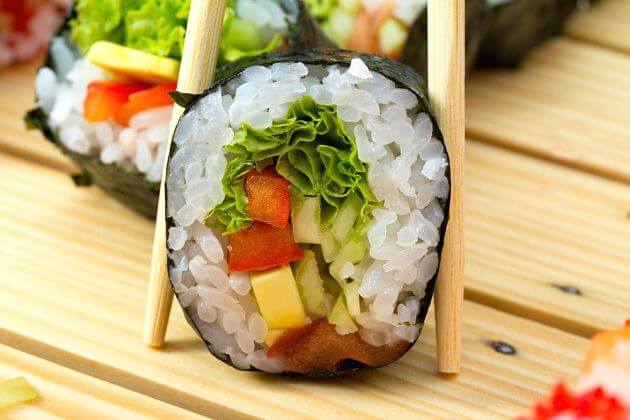
Different Types of Japanese Sushi
Our Japan Shore Excursions’ list of sushi contains six main types which are:
- Chirashizushi – the most popular sushi type
It is known as a bowl of rice filled with different ingredients - Inarizushi – the typical sushi form
Named after the Shinto god Inari, unlike other common forms, Inari can be defined as a pouch of deep-fried tofu simmered in mirin. - Makizushi – the main highlight of every sushi menu
It is a long and thin role of rice featuring ingredients like a strip of fresh tuna or cucumber then wrapped by a sheet of nori seaweed then cut into smaller pieces. - Nazerushi (matured sushi) – the original sushi
It is the initial form of sushi consists of fermented fish, rice is discarded later before eating. - Nigirizushi – the brilliant sushi recipe
This is a popular kind of sushi that rice is pressed by hand then topped with a variety of ingredients such as fish, tofu, vegetables, and omelets. A coating of marinade and garnishes such as spring onions, shaved onion, or chives can also be added. - Oshizushi (pressed sushi) – a must-try at any sushi bar
This type involves layering toppings then cutting the sushi into certain shapes like rectangles, triangles, or small squares. The toppings, including fish like mackerel or gizzard shad, may be placed diagonally or with a whole fish from end to end. This unique presentation style makes oshizushi a popular choice for bento boxes and gifts.
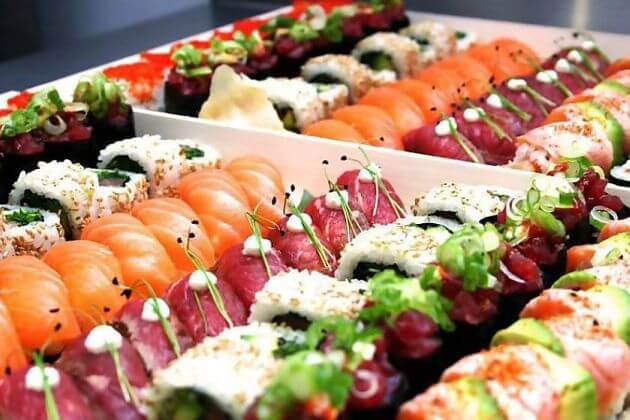
How To Eat Sushi in Japanese Traditional Way
- Prepare before you eat
There is a wet towel available for you to clean your hands before you eat. This is because eating maki and nigiri in traditional ways require you to use our own fingers instead of the chopsticks. Pour only a suitable amount of soy sauce into the bowl and add later if needed. The point is not to waste soy sauce which is considered disrespectful in Japanese customs. - No dunking
A common mistake many people make is to pick up a piece of sushi and dunk it straight into a pool of soy. This makes the soy mask the flavor of sushi vinegar. Instead of dunking, tilting the sushi towards the soy and then eating in one bite is more suitable. - Don’t mix wasabi
Mixing wasabi in a dish of soy may kill the punch of wasabi. The right way is to wipe a small amount of wasabi directly onto your sushi, then dip it lightly in the soy to preserve the flavor of each element. - Watch the order
The order is often eating from light to dark, starting with sashimi and light fish then fattier flavors such as salmon and kingfish and finish it with tuna. - Use chopsticks
Westerners may not familiar with this but you need to practice because it is a part of the tradition. - Enjoy the experience
Nowadays you can either take away or eat at restaurants but the latter is more recommended as visitors can have real experience in Japanese tradition and culture as well as practice those rules above.
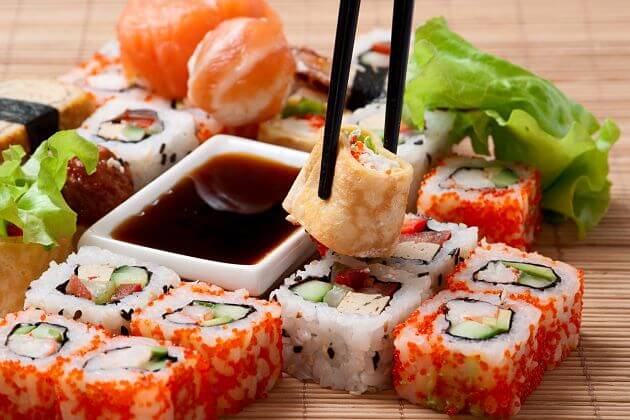
Famous Sushi Restaurants Near You in Tokyo
- Sukiyabashi Jiro
Sukiyabashi Jiro is one of the most renowned Sushi restaurants in the entire world. In 2014 marked the special event of the former US president Obama and Japanese PM Abe visit. Since then, its popularity grows especially after the documentary film “Jiro Dreams of Sushi” launched. Jiro’s restaurant in Ginza gained three-star by Michelin guide.
Address: 104-0061 Tokyo, Chuo City, Ginza, 4 Chome−2−15 - Sushi Masuda
The Sushi chef Masuda after worked for over 9 years at Sukiyabashi Jiro. The skillful chef has operated his own restaurant Sushi Masuda in 2014. Shortly after launching, Masuda has rapidly grown in popularity as one of the best sushi restaurants in Tokyo.
Address: 107-0062 Tokyo, Minato City, Minamiaoyama, 5 Chome−8−11 - Ginza Kyubey
Ginza Kyubey, locating in Ginza, was established in 1935. Kyubey ranks as the 7th best restaurant in the world by La Liste for its signature dishes.
Address: 8 Chome-7-6 Ginza, Chuo City, Tokyo 104-0061 - Umi
Umi was a Michelin two-star-restaurant for 6 consecutive years. Visitors can enjoy the fresh taste as the restaurant uses carefully selected ingredients straight from Tsukiji Market every day.
Address: 107-0062 Tokyo, Minato City, Minamiaoyama, 3 Chome−2−8 - Sushi Saito
The famous Sushi Saito has rewarded with 3-stars by Michelin for 5 years and owns the highest rate on the Japanese gourmet website Tabelog. Sushi dishes here can fascinate even the most sophisticated customers.
Address: 106-0032 Tokyo, Minato City, Roppongi, 1 Chome−4−5
